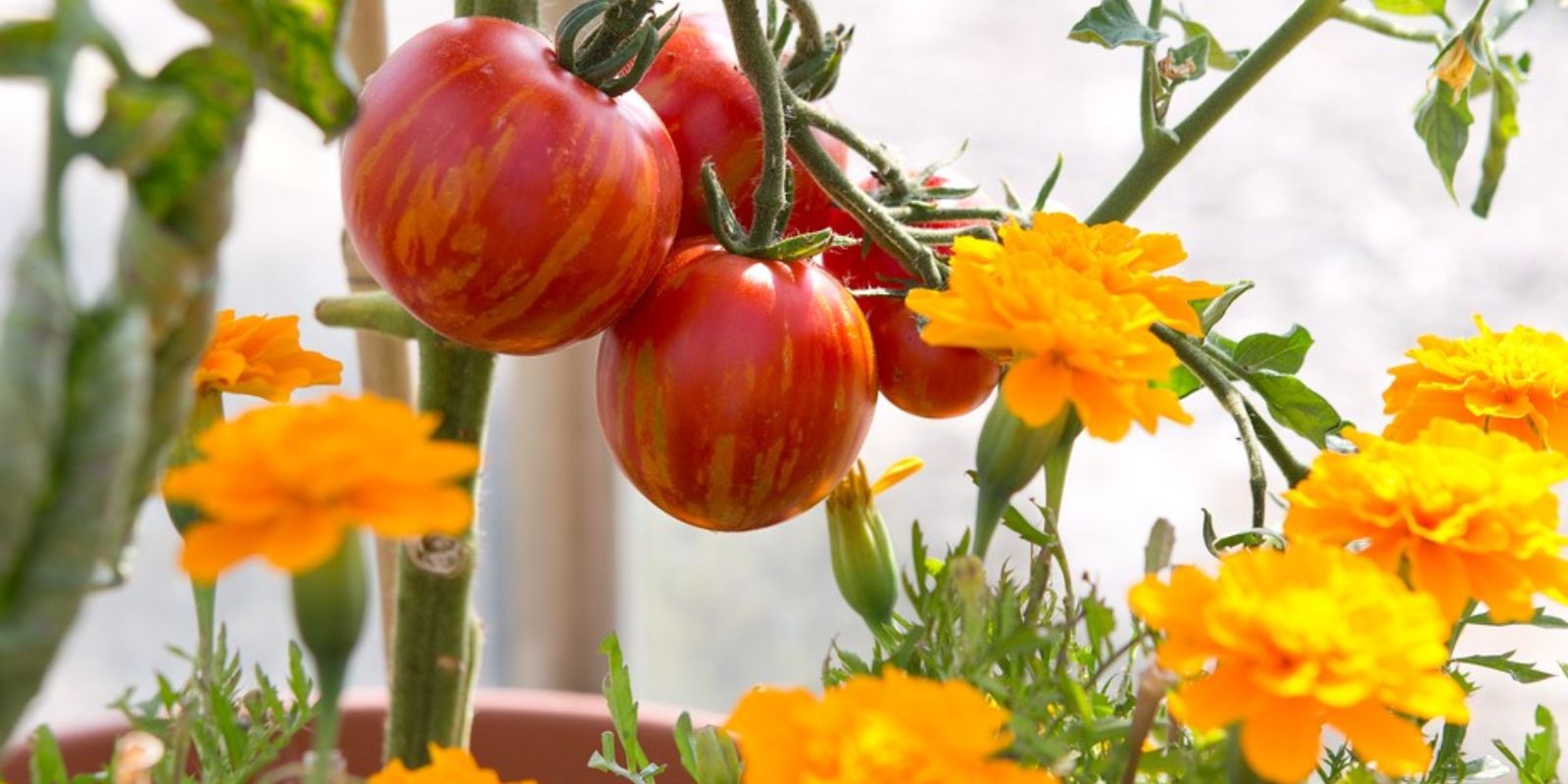Companion planting is a time-tested gardening technique that involves growing different plants in proximity for mutual benefits. One of the most celebrated combinations in the gardening community is the pairing of marigolds and tomatoes. This duo not only creates a vibrant and colorful garden but also enhances growth, repels pests, and attracts beneficial insects. In this article, we will explore the benefits of planting marigolds with tomatoes, step-by-step instructions on how to do it, and tips to ensure a successful harvest.
Understanding the Benefits of Planting Marigolds with Tomatoes
1. Pest Control
Marigolds are well-known for their ability to repel harmful pests, particularly nematodes and aphids. The flowers produce a natural chemical called thiophenes, which is effective in deterring root-knot nematodes that can damage tomato roots. By planting marigolds alongside tomatoes, you can reduce the need for chemical pesticides and create a healthier growing environment.
2. Attracting Beneficial Insects
Marigolds attract beneficial insects such as ladybugs and lacewings, which are natural predators of aphids and other harmful pests. By increasing the presence of these beneficial insects in your garden, you can help control pest populations and reduce the risk of infestations in your tomato plants.
3. Improved Pollination
The bright colors and sweet nectar of marigold flowers attract pollinators such as bees and butterflies. These pollinators play a crucial role in the overall health of your garden by improving the pollination of tomato flowers, which can lead to a better yield.
4. Enhanced Aesthetic Appeal
Beyond their practical benefits, marigolds add a pop of color and beauty to your garden. Their vibrant yellows, oranges, and reds create a visually appealing landscape that can enhance the enjoyment of gardening.
Step-by-Step Guide to Planting Marigolds with Tomatoes
Step 1: Choose the Right Location
Selecting the right location for your marigolds and tomatoes is crucial for their success. Both plants thrive in full sun, so look for a spot that receives at least 6 to 8 hours of direct sunlight per day. Ensure that the area has well-draining soil, as both marigolds and tomatoes dislike soggy roots.
Step 2: Prepare the Soil
To create a fertile environment for your plants, enrich the soil with organic matter. Mix compost or aged manure into the soil to improve its nutrient content and drainage. Aim for a pH level between 6.0 and 7.0, which is ideal for both marigolds and tomatoes.
Step 3: Select Your Varieties
Choosing the right varieties of marigolds and tomatoes can make a significant difference in your garden’s success. For marigolds, French marigolds (Tagetes patula) and African marigolds (Tagetes erecta) are popular choices due to their pest-repelling properties. For tomatoes, consider varieties suited for your climate and space, such as determinate varieties for smaller gardens or indeterminate types for larger spaces.
Step 4: Planting
Marigolds
- Timing: Plant marigold seeds indoors 6 to 8 weeks before the last frost date in your area. You can also sow them directly in the garden after the last frost when the soil has warmed.
- Spacing: Space marigold plants about 12 to 18 inches apart to ensure good airflow and reduce the risk of disease.
Tomatoes
- Transplanting: If you started tomato seeds indoors, transplant them outdoors after the last frost date when the seedlings are about 6 to 8 inches tall.
- Spacing: Space tomato plants 2 to 3 feet apart, depending on the variety. This spacing allows for adequate airflow and prevents the spread of diseases.
Step 5: Watering and Mulching
- Watering: Water the plants thoroughly after planting. Keep the soil consistently moist, especially during the early growth stages. Tomatoes require regular watering, particularly during flowering and fruiting.
- Mulching: Apply a layer of mulch around the plants to retain soil moisture, suppress weeds, and regulate soil temperature. Organic mulch, such as straw or shredded leaves, also adds nutrients to the soil as it breaks down.
Step 6: Monitor Growth
As your marigolds and tomatoes grow, keep an eye out for pests and diseases. The marigolds should help deter unwanted insects, but it’s still essential to monitor your plants regularly. Look for signs of aphids, hornworms, or other pests, and take appropriate action if needed.
Step 7: Harvest and Enjoy
As the growing season progresses, you’ll be rewarded with a bountiful harvest of tomatoes alongside blooming marigolds. Enjoy the fruits of your labor by using your fresh tomatoes in salads, sauces, and other dishes. The marigolds can also be used in flower arrangements or as a garnish.
Tips for Successful Companion Planting
- Diversity: Incorporate other companion plants alongside marigolds and tomatoes, such as basil, which can enhance flavor and deter pests.
- Rotate Crops: Practice crop rotation each year to prevent soil depletion and reduce the risk of diseases.
- Observe and Learn: Every garden is unique, so take note of what works best for your specific conditions and make adjustments as needed.
- Pest Management: Use natural pest control methods, such as neem oil or insecticidal soap, if you encounter significant pest issues.
- Stay Consistent: Regular maintenance, including watering, weeding, and pruning, is essential for the health of your plants.
Conclusion
Planting marigolds with tomatoes is a fantastic way to enhance the health and productivity of your garden. This companion planting technique not only provides aesthetic benefits but also promotes pest control, attracts beneficial insects, and improves pollination. By following the steps outlined in this article, you can create a thriving garden that showcases the beauty of both marigolds and tomatoes.
So grab your seeds, dig into the soil, and experience the joys of companion planting! With the right care and attention, you’ll enjoy a bountiful harvest and a garden that flourishes with life. Share your gardening journey with us using #MarigoldsAndTomatoes #CompanionPlanting #GardenGoals #GrowYourOwn! 🌼🍅

